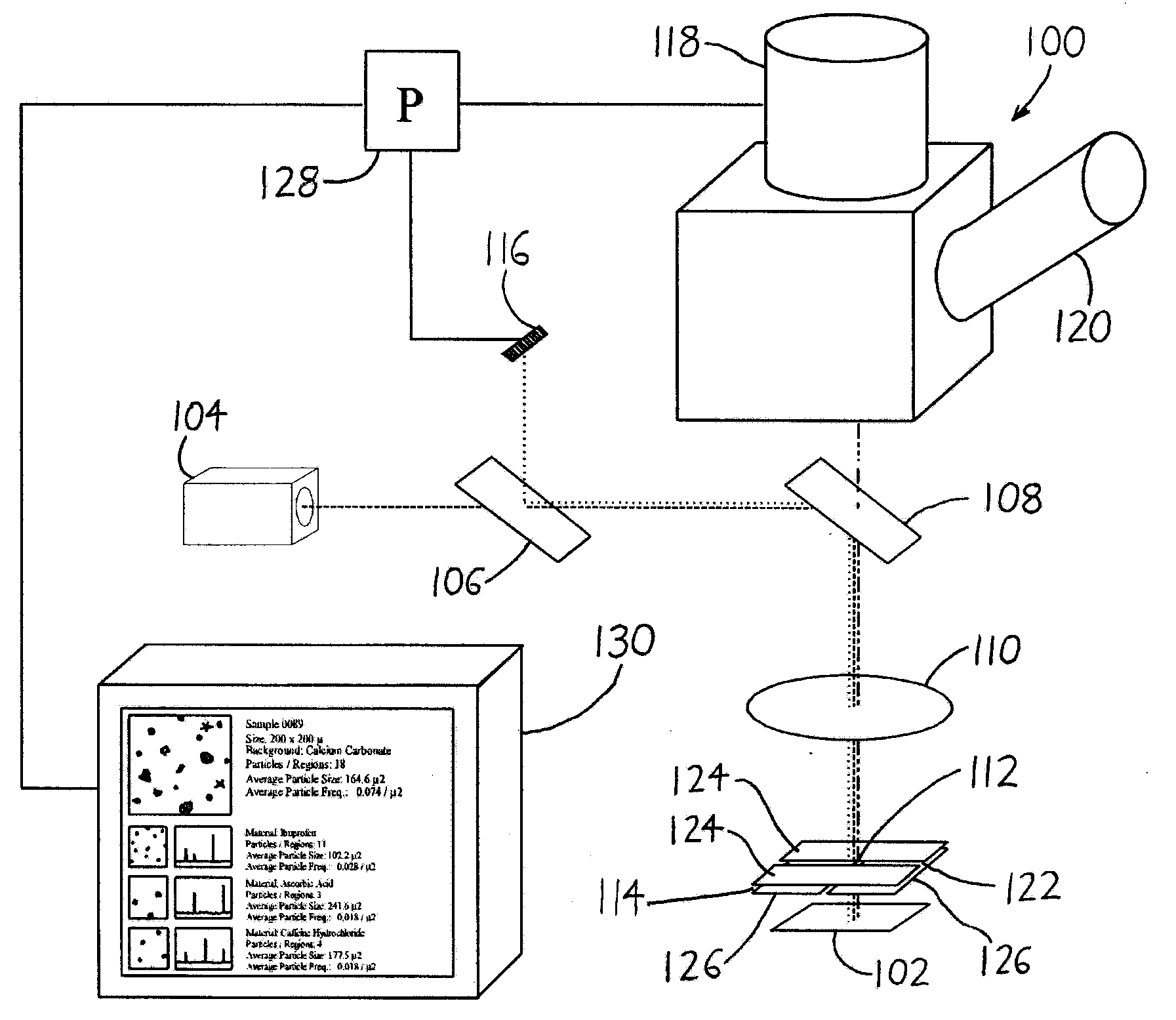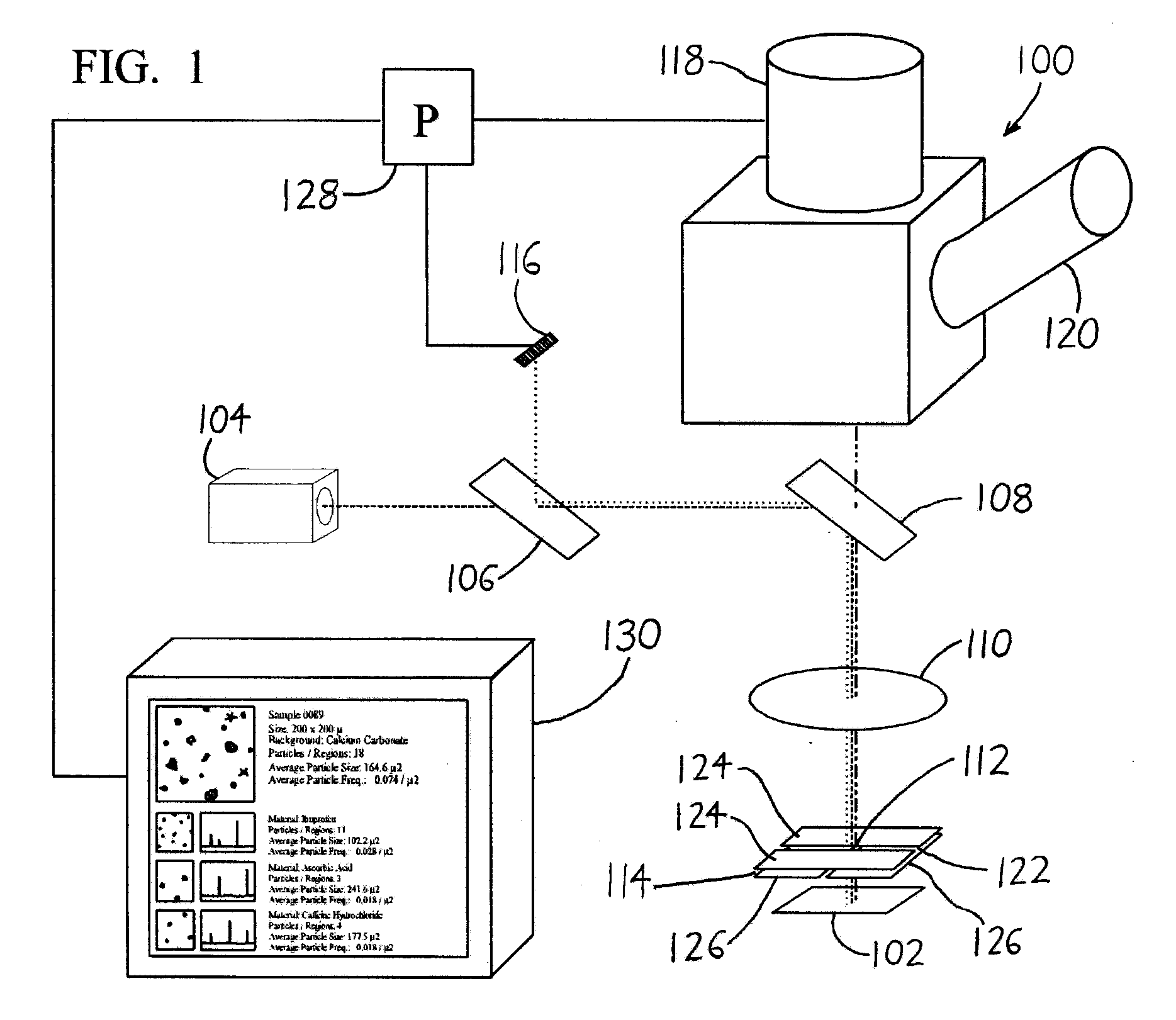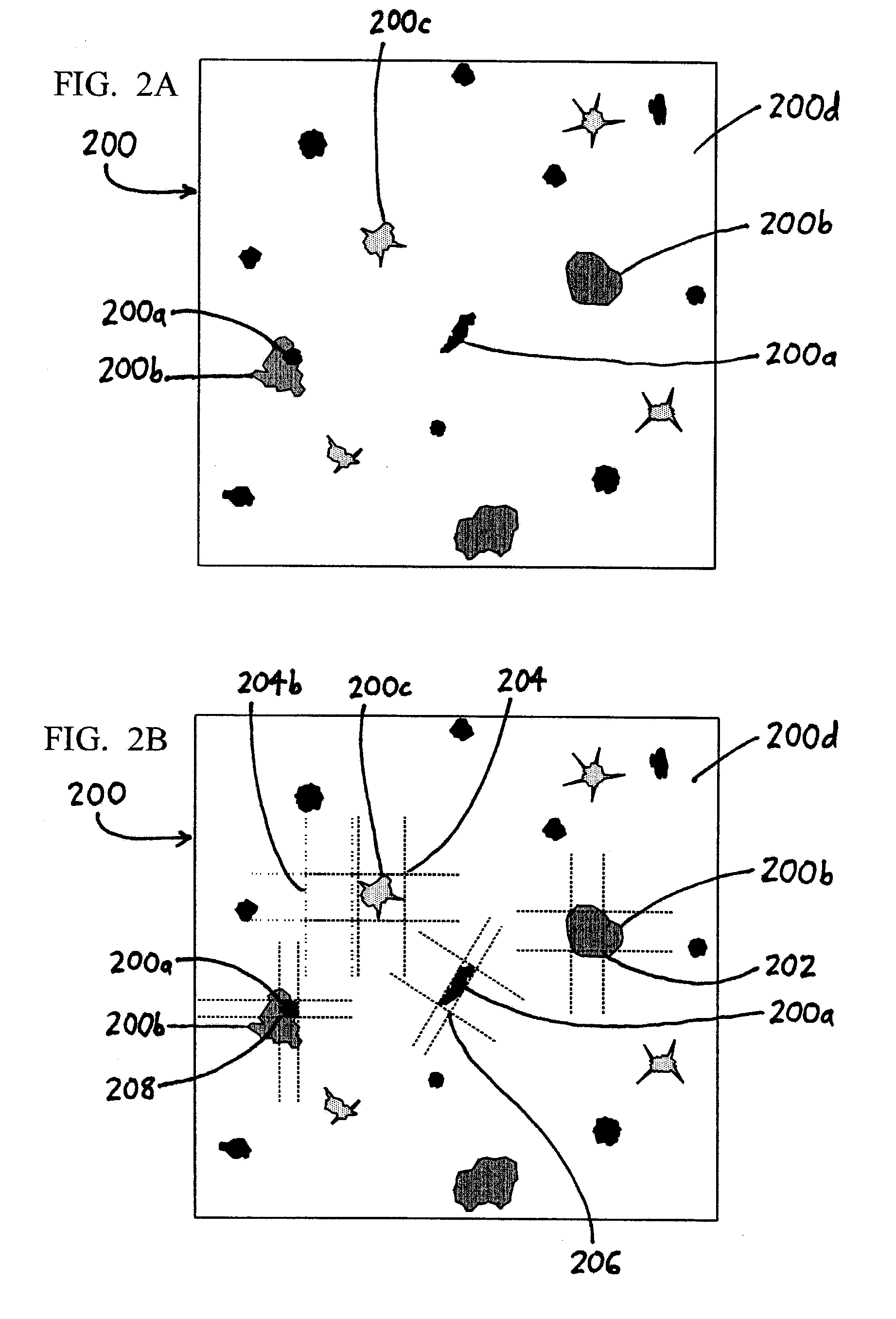Spectroscopic microscopy with image-driven analysis
a spectroscopic microscope and image-driven technology, applied in the field of molecular spectrometry instruments, can solve the problems of reducing the signal-to-noise ratio, time-consuming and tedious, hindering novice users, etc., and achieves the effect of facilitating the identification of these substances
- Summary
- Abstract
- Description
- Claims
- Application Information
AI Technical Summary
Benefits of technology
Problems solved by technology
Method used
Image
Examples
Embodiment Construction
[0025]To review and expand on the discussion in the foregoing Summary, the images obtained by a spectroscopic microscope can be used to define the size and location of an aperture through which spectra are collected from a specimen, and the collected spectra can be linked to their corresponding image regions (identified as areas having the same or similar appearance during image analysis) to provide useful and easily understood output. Regions can be identified and spectrometrically sampled solely on the basis of their appearance, e.g., each specimen region corresponding to an identified image region may be spectrally analyzed. Alternatively or additionally, all or part of a region of interest on a specimen may be spectrometrically sampled, as by capturing spectra about a one- or two-dimensional matrix of sampled areas, and the correlations between the spectra in the matrix may be used in conjunction with specimen regions identified from the specimen image to assign extracted spectr...
PUM
 Login to View More
Login to View More Abstract
Description
Claims
Application Information
 Login to View More
Login to View More - R&D
- Intellectual Property
- Life Sciences
- Materials
- Tech Scout
- Unparalleled Data Quality
- Higher Quality Content
- 60% Fewer Hallucinations
Browse by: Latest US Patents, China's latest patents, Technical Efficacy Thesaurus, Application Domain, Technology Topic, Popular Technical Reports.
© 2025 PatSnap. All rights reserved.Legal|Privacy policy|Modern Slavery Act Transparency Statement|Sitemap|About US| Contact US: help@patsnap.com



